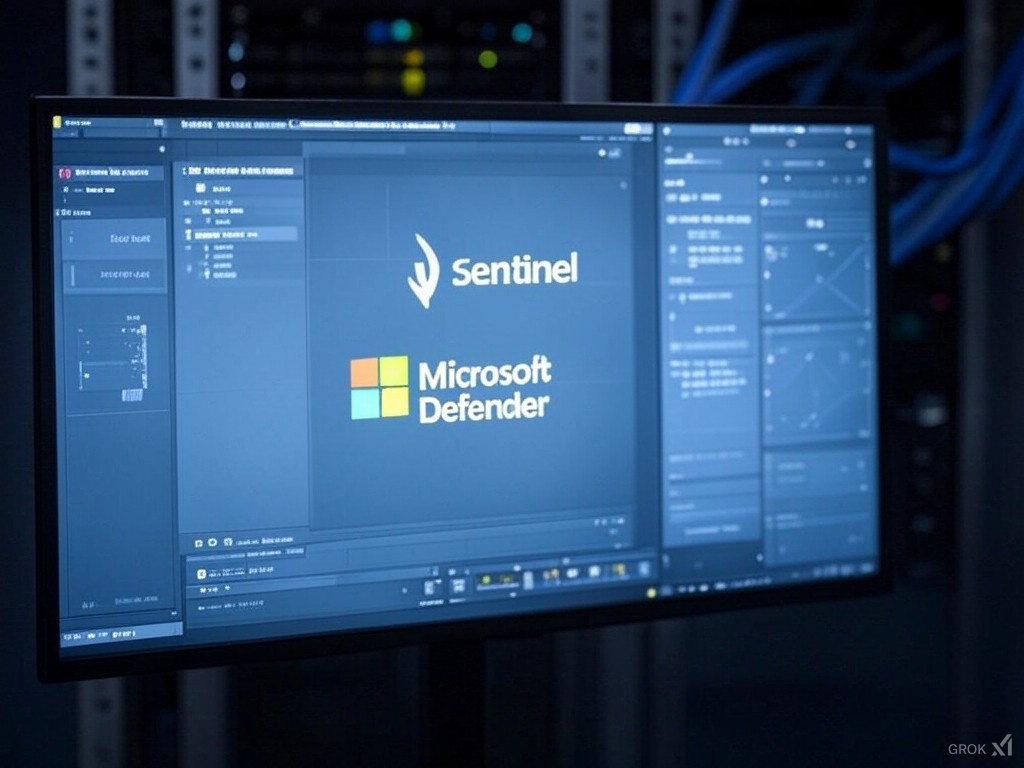Hey there, tech enthusiast! If you’re reading this, chances are you’re already knee-deep in the world of cybersecurity, or maybe you’re just dipping your toes in. Either way, you probably know that keeping your digital assets safe is no small feat these days. With so many threats out there—malware, phishing, ransomware, and more—it’s easy to feel overwhelmed by the sheer number of tools and solutions available.
But here’s the thing: not all cybersecurity tools are created equal. Some are like that one friend who always has your back, while others… well, let’s just say they’re more like the friends who show up after the party’s already over. Microsoft Defender and Sentinel? Let me tell you, these guys are the A-Team of cybersecurity—sharp, reliable, and ready to save the day.
If you’ve ever wondered what all the fuss is about with these tools or how they stack up against the competition, you’re in the right place. Today, we’re diving into the true power of Microsoft Defender (formerly known as Windows Defender) and its big brother, Microsoft Sentinel—two game-changers in the world of endpoint protection and broader security management.
What Exactly Are Microsoft Defender and Sentinel?
Let’s start with the basics. Microsoft Defender is an endpoint protection platform that’s been around for a while now. It’s built into Windows 10 and later, which makes it super convenient if you’re already using Microsoft products. But don’t let its familiarity fool you—this bad boy packs some serious punch when it comes to defending your devices against all sorts of threats.
On the other hand, Microsoft Sentinel is a more comprehensive platform that acts as an enterprise-grade cybersecurity solution. It’s like Defender on steroids—it integrates with tons of third-party tools, gives you advanced threat detection, and even offers automated response capabilities. If Defender is your go-to sidekick for endpoint protection, Sentinel is the team leader who coordinates the entire squad.
Why Should You Care?
Okay, so why should you care about these two tools? Well, let’s break it down:
- Defender is all about keeping your endpoints (that’s your laptops, desktops, and other devices) safe from malware, viruses, and other nasties. It does this through a combination of real-time scanning, behavior analysis, and machine learning models that can spot threats even if they’ve never been seen before.
- Sentinel takes things to the next level by giving you visibility across your entire organization. It acts as a central hub where you can monitor everything from endpoint data to cloud applications and even third-party devices. Plus, it’s got some serious analytics chops—using AI to identify patterns in data that might indicate a breach before it happens.
If you’re not convinced yet, let’s think about this: having tools like Defender and Sentinel means you’re not just reacting to threats—you’re proactive about stopping them before they can do damage. And let’s face it, in today’s world, being proactive is the only way to stay ahead of cybercriminals.
Key Features That Make Them Stand Out
Now that we’ve covered what these tools are and why you should care, let’s dive into some of their standout features:
1. Seamless Integration
One of the biggest strengths of Microsoft Defender and Sentinel is how well they work together (and with other tools). Defender feeds data directly into Sentinel, which means you don’t have to juggle multiple platforms or worry about missing critical information. This integration isn’t just a nice-to-have—it’s a game-changer for organizations that need a unified view of their security landscape.
2. Advanced Threat Detection
Both tools use machine learning models to analyze vast amounts of data, which means they can identify threats that might slip past traditional signature-based detection methods. Defender, for example, uses something called “Predictive Security Intelligence” to anticipate and block potential attacks before they materialize. Sentinel takes this a step further with its advanced analytics engine, which can detect anomalies in your network traffic or user behavior that could indicate a breach.
3. Automated Responses
Let’s be honest—cybersecurity teams are stretched thin as it is. Between monitoring for threats and responding to incidents, there’s not much time left for anything else. That’s where automated responses come in. Both Defender and Sentinel allow you to set up playbooks that can automatically respond to detected threats, whether that means isolating a compromised device or shutting down access to sensitive data.
4. Cloud-Based Architecture
In today’s cloud-first world, having security tools that are built with the cloud in mind is a huge plus. Both Defender and Sentinel are designed to work seamlessly with cloud-based infrastructure, which means you don’t have to worry about managing complex on-premises setups. Plus, since everything runs in the cloud, you get the benefit of scalability—you can easily adjust your security posture as your organization grows.
The ROI You Can Expect
Okay, so we’ve talked a lot about what these tools do and why they’re great, but let’s talk numbers—because at the end of the day, every business decision comes down to ROI.
- Cost Efficiency: By consolidating your security needs into Defender and Sentinel, you can reduce the number of separate tools you’re using. This not only simplifies your setup but also lowers your overall costs.
- Faster Response Times: With automated responses and real-time threat detection, you’re saving宝贵 time that would otherwise be spent manually investigating and mitigating incidents.
- Reduced Downtime: By preventing breaches before they happen, you’re safeguarding your business from the kind of downtime (and reputational damage) that comes with a major security incident.

The Bottom Line
So there you have it—our deep dive into the true power of Microsoft Defender and Sentinel. These tools aren’t just another pair of cybersecurity solutions; they’re a game-changer for organizations looking to stay ahead of threats in today’s fast-evolving digital landscape.
Whether you’re just starting out with endpoint protection or you’re a seasoned security pro looking to streamline your operations, Defender and Sentinel offer something for everyone. They’re powerful, flexible, and built with the future in mind—so if you haven’t already, it might be time to give them a closer look.
And hey, next time someone asks you why you love these tools so much, just tell them: “It’s not about being prepared—it’s about being proactive.”
Now go forth and secure your digital world!




